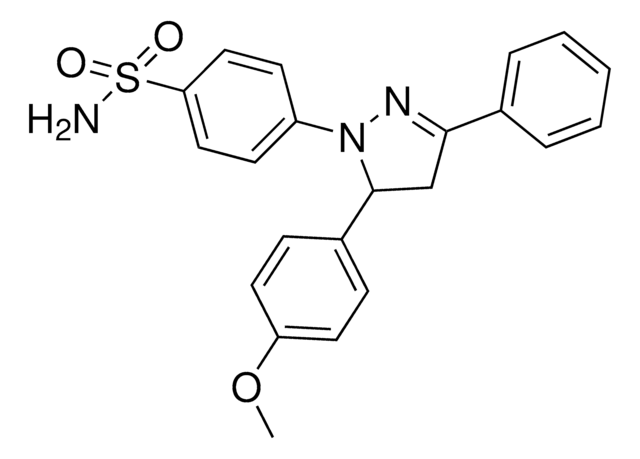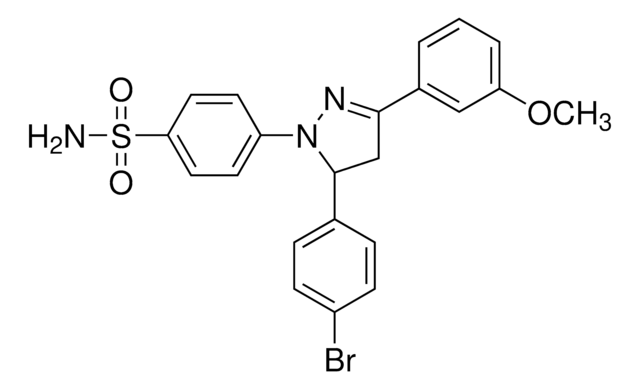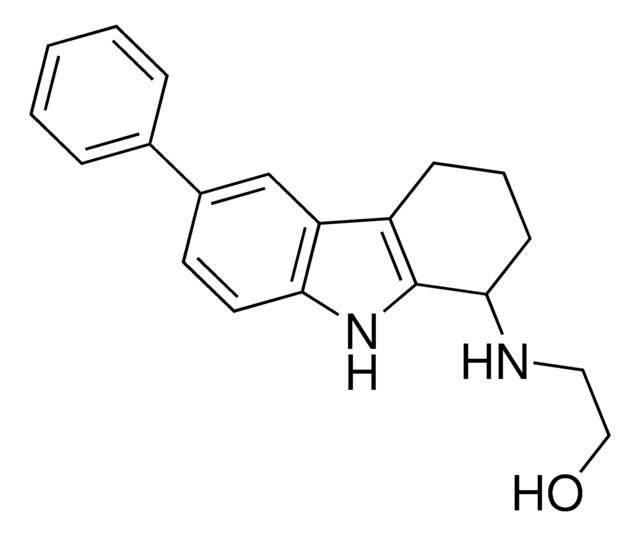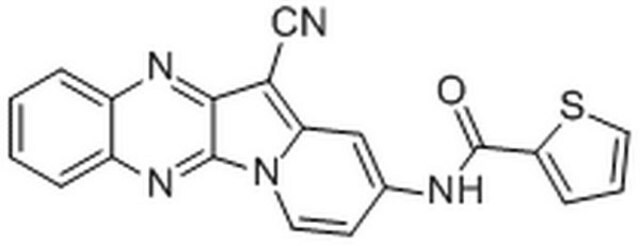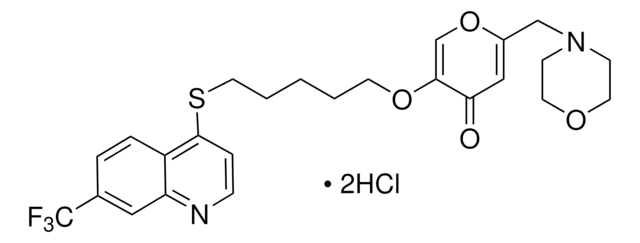5.00503
CDC42 Inhibitor III, ZCL278
Synonym(e):
CDC42 Inhibitor III, ZCL278, CDC42 GTPase Inhibitor III, 4-(3-(2-(4-Bromo-2-chloro-phenoxy)-acetyl)-thioureido)-N-(4,6-dimethyl-pyrimidin-2-yl)-benzenesulfonamide, 2-(4-Bromo-2-chlorophenoxy)-N-((4-((4,6-dimethyl-2-pyrimidinyl)sulfamoyl)phenyl)carbamothioyl)acetamide
About This Item
Empfohlene Produkte
Assay
≥94% (HPLC)
Qualitätsniveau
Form
solid
Hersteller/Markenname
Calbiochem®
Lagerbedingungen
OK to freeze
protect from light
Farbe
light beige
Löslichkeit
DMSO: 50 mg/mL
Lagertemp.
2-8°C
InChI
1S/C21H19BrClN5O4S2/c1-12-9-13(2)25-20(24-12)28-34(30,31)16-6-4-15(5-7-16)26-21(33)27-19(29)11-32-18-8-3-14(22)10-17(18)23/h3-10H,11H2,1-2H3,(H,24,25,28)(H2,26,27,29,33)
InChIKey
XKZDWYDHEBCGCG-UHFFFAOYSA-N
Allgemeine Beschreibung
Please note that the molecular weight for this compound is batch-specific due to variable water content. Please refer to the vial label or the certificate of analysis for the batch-specific molecular weight. The molecular weight provided represents the baseline molecular weight without water.
Biochem./physiol. Wirkung
CDC42
Verpackung
Warnhinweis
Rekonstituierung
Sonstige Hinweise
Rechtliche Hinweise
Lagerklassenschlüssel
11 - Combustible Solids
WGK
WGK 2
Flammpunkt (°F)
Not applicable
Flammpunkt (°C)
Not applicable
Analysenzertifikate (COA)
Suchen Sie nach Analysenzertifikate (COA), indem Sie die Lot-/Chargennummer des Produkts eingeben. Lot- und Chargennummern sind auf dem Produktetikett hinter den Wörtern ‘Lot’ oder ‘Batch’ (Lot oder Charge) zu finden.
Besitzen Sie dieses Produkt bereits?
In der Dokumentenbibliothek finden Sie die Dokumentation zu den Produkten, die Sie kürzlich erworben haben.
Unser Team von Wissenschaftlern verfügt über Erfahrung in allen Forschungsbereichen einschließlich Life Science, Materialwissenschaften, chemischer Synthese, Chromatographie, Analytik und vielen mehr..
Setzen Sie sich mit dem technischen Dienst in Verbindung.

